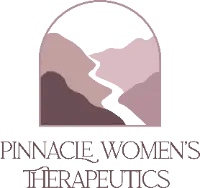Abdominal surgeries can include anything from a hernia repair to a c-section, or a gynecologic scope procedure or diastasis repair. They may all seem unrelated except for ONE main thing… The CORE muscles were CUT!
Regardless of the size of the incision or scar, this was a major impact to the abdominal muscles and larger core muscle team.
Often, the abdominals will reflexively become overly tense due to pain while recovering and guarding while moving in the first days and perhaps weeks. Left to their own devices, the abdominal muscles could become disconnected from the rest of the core team.
(This is where pelvic PT comes in to play)
The following is a list of things you can do in the early days and weeks to care for YOUR abdominal incision. Note: have you had abdominal surgery but it has been a while? Read on! There may still be some concepts that are missing from your self care or concepts that may be the missing piece to your complete recovery.
1). Abdominal Binder:
These are often prescribed to patients as they are getting discharged from the hospital. Think of them as a corset of sorts, but the goal with these is to provide moderate support to the belly muscles as they are newly healing. Why? Abdominal muscles can often feel quite sore when you move at all or try to pick up something more than 3-5 pounds. A binder should fit snug, but not feel restrictive.
Some people choose to wear their binder morning and night at first and then wean off of the time they are sleeping or are sedentary.
NOTE: If you are wearing a brace after a c-section, watch for any increase in sensation of downward pelvic floor pressure. Discontinue using the brace if this is a case and consult with your healthcare provider. You can also learn more in the postpartum guide:
2). Scar Care:
As your doctor or surgeon likely told you, it is important to get eyes on the incisions daily in the first few weeks to watch for any signs of infection. That would look like excessive redness, puffiness, or feel excessively painful.
Once the scabs have fallen off is when it is safe to begin scar massage. This is where you place your fingertips around and on top of the scar/s and help the tissues to move and glide again. It can look like making circles, criss cross pattern, or mild to moderate sustained stretch to the soft tissues around the incision. I usually encourage patients to work on their scar most days for only a few minutes with the window of biggest impact being the first 3 months.
Specific scar lotions, salves, oils can also be helpful here to lessen any discoloration or dryness.
3). Belly Breathing:
As mentioned earlier in this post, the abdominal muscles are a part of the greater core muscle team. With any injury or surgery involving any of these muscles, the core team will be affected. Namely, the synchronized coordination of these muscles with breathing can be altered.
To belly breath, one should lay on their back to start with a pillow under their knees. A hand can be placed on their belly and a hand on their chest. Focus on inhaling through the nose with the belly rising and exhale through the mouth with the belly falling back down. Work in groups of 10 to start as it can take a lot of focus for many. Work into a full breathing session of 5-10 minutes.
Progression: once breathing on your back feels better and normalized, you can progress to doing this same breathing pattern (inhale through nose- belly expands, exhale- let belly recoil). If side lying posture feels easy, then progress on all fours. The challenge here is to actually let the belly FULLY release towards the floor with inhale and then gently engage the abdominals to lift the belly back up to the spine.
Check out this YouTube link: Early Core Rehab After Abdominal Surgery
4). Sneeze Alert:
A hard sneeze in the early days after surgery can be quite the painful thing… I mean this is forced quick contraction of the very core muscles that were just cut and then stitched back up! I recommend having a small little pillow handy in the first couple of weeks following surgery. And when you feel a sneeze coming on, grab that pillow and gently press it into the belly where the stitches are located to provide some bracing of the muscles.
How do we know when we can progress to higher level core activities??
This will firstly be based on your surgeon’s protocol. But once you are given the “all clear” it doesn’t mean that a run or cross fit gym is the right thing for you just yet. You’ll want to know that your core muscle team is organized and can accommodate to the demand of higher level activities without having to compensate or seeing the belly bulge outward (indicating loss of pressure management)
THIS is where a pelvic PT can come in VERY HANDY to help guide you towards increasing activity safely or continue to help you heal and resolve any remaining pain. Pelvic PTs are typically pretty obsessed with good exercise form and will be sure that you are safe the entire way on your healing journey.
Have questions about your post surgery journey? Click the link below to schedule a consult to have us listen to your story and help with determining if we are a good match to help you find the healing that you deserve.





